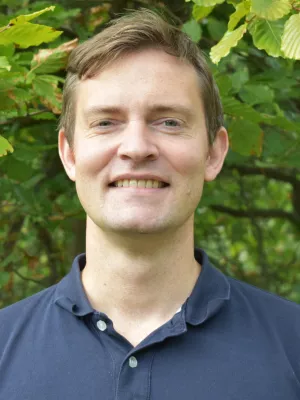
Yann Clough
Professor

Evaluating predictive performance of statistical models explaining wild bee abundance in a mass-flowering crop
Författare
Summary, in Swedish
Wild bee populations are threatened by current agricultural practices in many parts of the world, which may put pollination services and crop yields at risk. Loss of pollination services can potentially be predicted by models that link bee abundances with landscape‐scale land‐use, but there is little knowledge on the degree to which these statistical models are transferable across time and space. This study assesses the transferability of models for wild bee abundance in a mass‐flowering crop across space (from one region to another) and across time (from one year to another). The models used existing data on bumblebee and solitary bee abundance in winter oilseed rape fields, together with high‐resolution land‐use crop‐cover and semi‐natural habitats data, from studies conducted in five different regions located in four countries (Sweden, Germany, Netherlands and the UK), in three different years (2011, 2012, 2013). We developed a hierarchical model combining all studies and evaluated the transferability using cross‐validation. We found that both the landscape‐scale cover of mass‐flowering crops and permanent semi‐natural habitats, including grasslands and forests, are important drivers of wild bee abundance in all regions. However, while the negative effect of increasing mass‐flowering crops on the density of the pollinators is consistent between studies, the direction of the effect of semi‐natural habitat is variable between studies. The transferability of these statistical models is limited, especially across regions, but also across time. Our study demonstrates the limits of using statistical models in conjunction with widely available land‐use crop‐cover classes for extrapolating pollinator density across years and regions, likely in part because input variables such as cover of semi‐natural habitats poorly capture variability in pollinator resources between regions and years.
Avdelning/ar
- Centrum för miljö- och klimatvetenskap (CEC)
- Biodiversitet och bevarandevetenskap
- BECC: Biodiversity and Ecosystem services in a Changing Climate
- Biodiversitet
- Molekylär ekologi och evolution
Publiceringsår
2021-01-19
Språk
Engelska
Sidor
525-536
Publikation/Tidskrift/Serie
Ecography
Volym
44
Issue
4
Dokumenttyp
Artikel i tidskrift
Förlag
Wiley-Blackwell
Ämne
- Ecology
Nyckelord
- Brassica napus
- mass flowering crops
- model predictions
- permanent semi-natural habitats
- transferability in ecology
- wild pollinators
- Brassica napus
- mass flowering crops
- model predictions
- permanent semi-natural habitats
- transferability in ecology
- wild pollinators
Status
Published
Forskningsgrupp
- Biodiversity and Conservation Science
- Molecular Ecology and Evolution Lab
ISBN/ISSN/Övrigt
- ISSN: 0906-7590